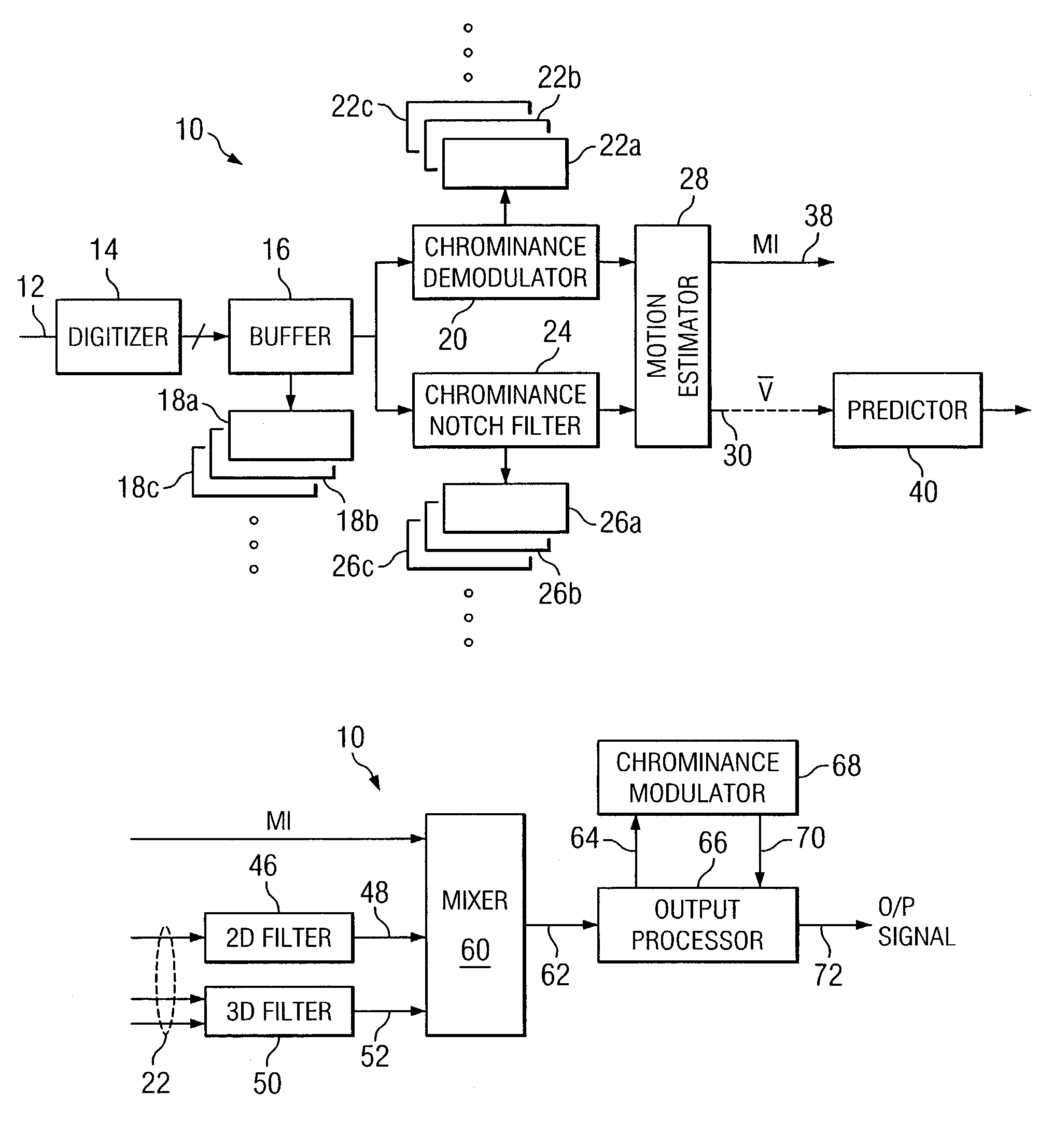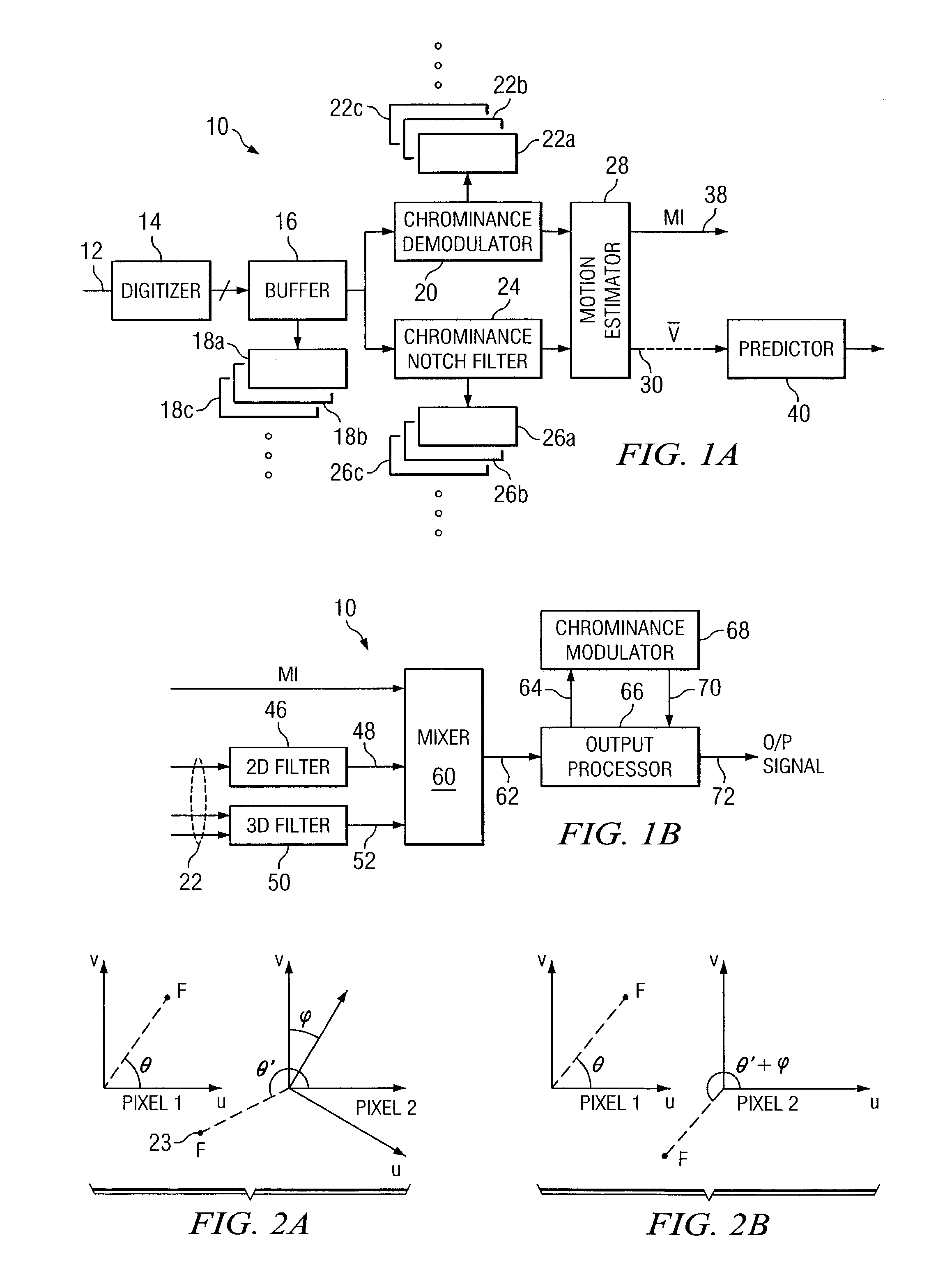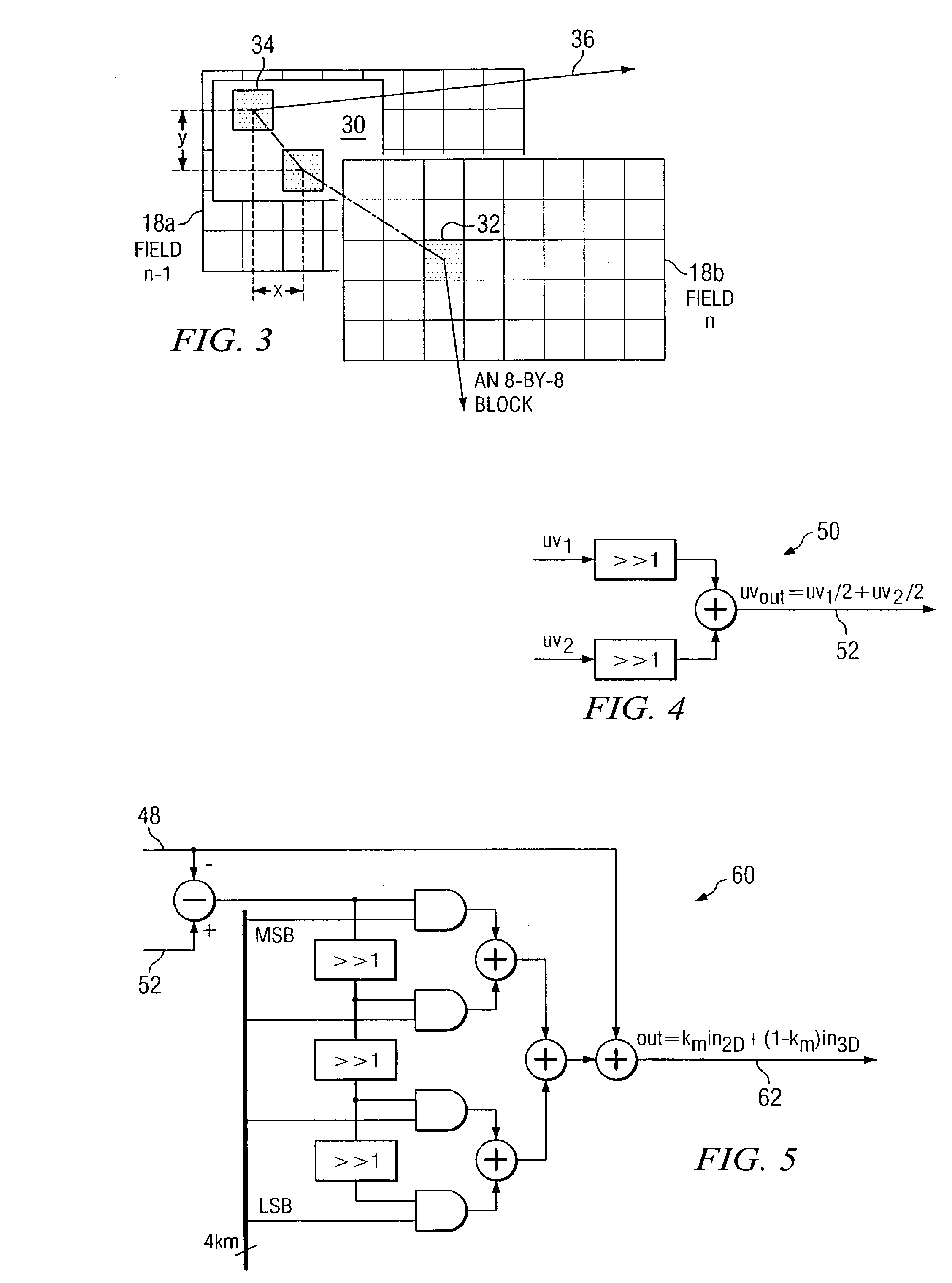Processing a video signal using motion estimation to separate luminance information from chrominance information in the video signal
a technology of motion estimation and video signal, applied in the field of video signal processing, can solve problems such as quality loss, and achieve the effects of reducing or eliminating, similar luminance information and chrominance information, and increasing the number of pixels
- Summary
- Abstract
- Description
- Claims
- Application Information
AI Technical Summary
Benefits of technology
Problems solved by technology
Method used
Image
Examples
Embodiment Construction
[0015]FIGS. 1A–1B illustrate an example system 10 for processing a video signal 12. Video signal 12 may be a composite video signal that includes information for a number of frames, each frame representing an image. Each frame may include a number of pixels, each pixel having luminance information and chrominance information. The luminance information may generally specify greyscale information generally sufficient to display a black and white image in substantially full detail, and the chrominance information may generally specify color information. In certain embodiments, video signal 12 may also include programming information associated with the frames. Video signal 12 may be in analog format, digital format, or in any other suitable format. Video signal 12 may be a National Television System Committee (NTSC) video signal, Phase Alteration Line (PAL) video signal, or any other suitable type of video signal. The luminance and chrominance information may partially share the same r...
PUM
 Login to View More
Login to View More Abstract
Description
Claims
Application Information
 Login to View More
Login to View More - R&D
- Intellectual Property
- Life Sciences
- Materials
- Tech Scout
- Unparalleled Data Quality
- Higher Quality Content
- 60% Fewer Hallucinations
Browse by: Latest US Patents, China's latest patents, Technical Efficacy Thesaurus, Application Domain, Technology Topic, Popular Technical Reports.
© 2025 PatSnap. All rights reserved.Legal|Privacy policy|Modern Slavery Act Transparency Statement|Sitemap|About US| Contact US: help@patsnap.com



